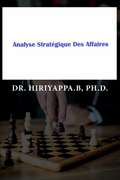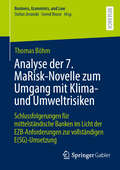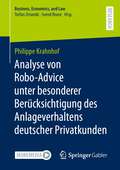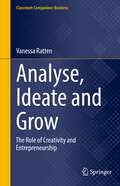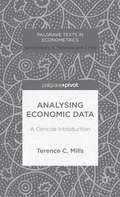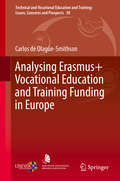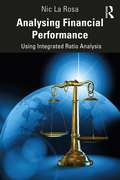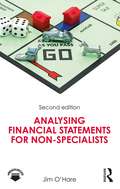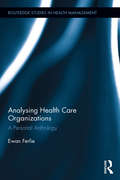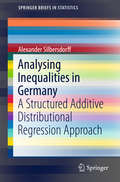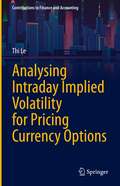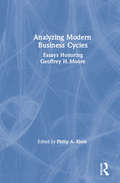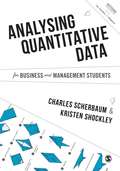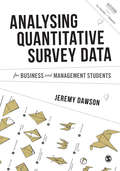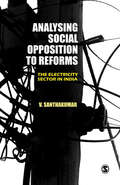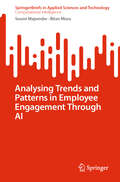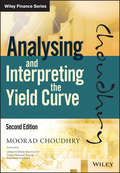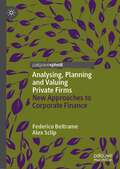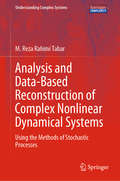- Table View
- List View
Analogies in International Investment Law and Arbitration
by Valentina VadiAlthough investment treaty arbitration has become the most common method for settling investor-state disputes, some scholars and practitioners have expressed concern regarding the magnitude of decision-making power allocated to investment treaty tribunals. Many of the recent arbitral awards have determined the boundary between two conflicting values: the legitimate sphere for state regulation in the pursuit of public goods, and the protection of foreign private property from state interference. Can comparative reasoning help adjudicators in interpreting and applying broad and open-ended investment treaty provisions? Can the use of analogies contribute to the current debate over the legitimacy of investor-state arbitration, facilitating the consideration of the commonweal in the same? How should comparisons be made? What are the limits of comparative approaches to investment treaty law and arbitration? This book scrutinises the impact a comparative approach can have on investment law, and identifies a method for drawing sound analogies.
Analogous and Digital
by Otl AicherOtl Aicher (1922-1991) was an outstanding personality in modern design, he was a co-founder of the legendary Hochschule fur Gestaltung (HfG), the Ulm School of Design, Germany. His works since the fifties of the last century in the field of corporate design and his pictograms for the 1972 Summer Olympics in Munich are major achievements in the visual communication of our times. "An integral component of Aicher's work is that it is anchored in a "philosophy of making" inspired by such thinkers as Ockham, Kant or Wittgenstein, a philosophy concerned with the prerequisites and aims, the objects and claims, of design. Aicher's complete theoretical and practical writings on design (which include all other aspects of visual creativity, such as architecture) are available with this new edition of the classic work. If Aicher prefers the analogous and concrete to the digital and abstract he does it with a philosophical intention. He relativizes the role of pure reason. He criticizes the rationality of Modernism as a result of the dominance of purely abstract thinking. Anyone who prefers the abstract to the concrete does not only misunderstand the mutual dependence of concept and view. In Aicher's judgement he is also creating a false hierarchy, a rank order that is culturally fatal. Things that are digital and abstract are not greater, higher and more important than things that are analogous and concrete." Wilhelm Vossenkuhl
Analyse Stratégique Des Affaires
by Hiriyappa BL'analyse stratégique des entreprises est une lecture essentielle pour les PDG et les cadres supérieurs, les responsables de la stratégie, les entrepreneurs actuels et futurs, les investisseurs - en particulier les responsables du développement des entreprises - et tout homme d'affaires qui a la responsabilité d'analyser les entreprises, l'industrie, la situation concurrentielle par l'application des matrices SWOT, TOWS et BCG pour aborder les questions, les défis et les problèmes liés aux entreprises. Ce livre est spécialement conçu pour les étudiants en commerce, MBA, PGDM et cadres. Gestion informatique, hommes d'affaires, entrepreneurs, directeurs d'exploitation, cadres intermédiaires de l'ensemble du conseil en gestion, cadres d'entreprise et professionnels des affaires tels que directeur des prévisions et de la planification, directeur des prévisions, directeur de la planification stratégique, directeur du marketing, directeur des ventes, directeur de la publicité, directeur financier, agent financier, contrôleur, trésorier, analyste financier, directeur de la production, directeur de la marque/des produits, directeur des nouveaux produits, directeur de la chaîne d'approvisionnement, directeur de la logistique, directeur de la gestion du matériel, agent d'achat, directeur de la programmation et directeur des systèmes d'information.
Analyse der 7. MaRisk-Novelle zum Umgang mit Klima- und Umweltrisiken: Schlussfolgerungen für mittelständische Banken im Licht der EZB-Anforderungen zur vollständigen E(SG)-Umsetzung (Business, Economics, and Law)
by Thomas BöhmDie Europäische Zentralbank stellte in ihrer Mitteilung vom 02. November 2022 klar, dass alle Banken die regulatorischen Anforderungen zum Umgang mit Klima- und Umweltrisiken bis spätestens Ende 2024 vollständig erfüllen müssen. Mit der 7. Novelle hat die Bundesanstalt für Finanzdienstleistungsaufsicht (BaFin) ESG-Risiken in ihre Mindestanforderungen an das Risikomanagement (MaRisk) der Banken übernommen. In diesem Werk werden die aufsichtlichen ESG-Erwartungshaltungen von EZB, EBA und BaFin dargelegt und miteinander verglichen. Die Arbeit zeigt Ansätze auf, wie mittelständische Institute angemessen mit Klima- und Umweltrisiken in der Banksteuerung umgehen können. Dabei wird deutlich, dass in einer konsequenten institutsspezifischen Umsetzung, neben der Reduzierung möglicher Risiken, auch viele Chancen in Form neuer Geschäftsfelder, gesteigerter Ertragschancen und Imagegewinn liegen.
Analyse und Optimierung von Energieverbundsystemen
by Wolfgang SchellongDas interdisziplin#65533;r aufgebaute Buch bietet kommunalen Energieversorgern Hilfestellung, damit sie ihre Energieverbundsysteme analysieren und optimal steuern lernen. Es gibt einen #65533;berblick #65533;ber den Aufbau und die Komponenten von kommunalen Energieverbundsystemen. Die mathematischen und informationstechnischen Methoden zur Energiesystemanalyse werden umfassend beschrieben und an Praxisbeispielen erl#65533;utert. Es wird gezeigt, wie die Effizienz eines Kraftwerksverbunds mithilfe eines Energiecontrollingsystems analysiert und verbessert werden kann. Die daf#65533;r notwendigen Schritte zum Aufbau eines Energieinformationssystems werden detailliert dargestellt. Auch die mathematischen Methoden zur Analyse und Prognose des Energiebedarfs werden vorgestellt. Es wird gezeigt, wie diese Methoden zur Prognose der Stromlast und des W#65533;rmebedarfs von Fernw#65533;rmesystemen genutzt werden. Aufbauend auf den Erkenntnissen der Energieanalyse werden Optimierungsaufgaben f#65533;r Verbundsysteme abgeleitet und L#65533;sungsans#65533;tze f#65533;r die mathematische Optimierung dargestellt. Das Buch wird abgerundet durch eine zusammenfassende Beschreibung der Anforderungen f#65533;r die Softwareentwicklung eines Energiemanagementsystems.
Analyse von Robo-Advice unter besonderer Berücksichtigung des Anlageverhaltens deutscher Privatkunden (Business, Economics, and Law)
by Philippe KrahnhofSpätestens seit dem Jahr 2020 nimmt die mediale Berichterstattung von Robo-Advisors in Deutschland zu. Diese digitale Anlageverwaltung kann dazu beitragen, neue Ertragsquellen zu erschließen und die Kundenbedürfnisse nach innovativen Finanzprodukten zu befriedigen. Philippe Krahnhof eruiert in diesem Buch die Einflussparameter auf die Kundenbereitschaft, diese Dienstleistung zu nutzen, sowie Vor- und Nachteile sowohl aus Banken- als auch aus Verbrauchersicht. Ferner werden empirische Erkenntnisse zur Implementierung von Robo-Advice in das Geschäftsmodell gesammelt. Robo-Advice kann insbesondere zur Reduzierung emotionaler Finanzentscheidungen aus Privatkundensicht beitragen. Obwohl eine derartige Dienstleistung für sämtliche Privatkunden relevant ist, bedarf es auf Basis der empirischen Ergebnisse gesammelter Finanzerfahrungen, um diese zu nutzen.
Analyse, Ideate and Grow: The Role of Creativity and Entrepreneurship (Classroom Companion: Business)
by Vanessa RattenThis book explores that in order to survive in the current dynamic and changing business environment, individuals need to analyse and ideate. This book provides analysis on this process involving investigating how and why changes take place and what they mean for society. This book takes into account altering environmental conditions that influence business strategy. Further, to do a proper analysis takes time and skill thus it is important to know what resources and expertise is required. This book shows that the ideation process involves more creativity in terms of thinking outside the box. This involves new thought processes about emerging technological change that will influence business directions. This book states that ideation is a process that requires some degree of flexibility as market circumstances mean constant innovation is required.
Analysing Economic Data: A Concise Introduction (Palgrave Texts in Econometrics)
by Terence C. MillsCovers the key issues required for students wishing to understand and analyse the core empirical issues in economics. It focuses on descriptive statistics, probability concepts and basic econometric techniques and has an accompanying website that contains all the data used in the examples and provides exercises for undertaking original research.
Analysing Erasmus+ Vocational Education and Training Funding in Europe (Technical and Vocational Education and Training: Issues, Concerns and Prospects #30)
by Carlos de Olagüe-SmithsonThis volume presents an analysis of the Erasmus+ funding process. It examines the first 3 years of the programme to discover if the funds are being distributed homogeneously throughout the regions of France, Germany, Italy, Spain and the United Kingdom. If it turns out that funds are being unevenly delivered this could result in an inequity situation: students living in specific regions might have greater chances to benefit from KA102 funds, while other students might have fewer opportunities to benefit from these funds. The book looks in detail at the implementation and performance of the various programmes within Erasmus+, the funds and distribution of these funds, and the number of students in the programmes. The book studies these five countries because they contain more than half of all the vocational education and training students in the European Union. Also, these countries had the most students participating in mobilities during the previous Leonardo da Vinci programme. Hence, it is to be expected that the conclusions drawn in this study are representative of the situation of VET mobilities and Erasmus+ funding in Europe. Erasmus+ is the European programme in charge of fostering the development of transnational programmes in the areas of education, training, sports and youth policies. It is focused on the adaptation to a fast changing world, tackling youth unemployment, and preparing workers for highly skilled jobs. Erasmus+ integrates former programmes such as the Lifelong Learning Programme, Youth in Action, and the various international Higher Education and Sports programmes. It started in 2014 and will be active until 2020.
Analysing Financial Performance: Using Integrated Ratio Analysis
by Nic La RosaDespite a plethora of techniques to analyse the financial performance of a business, there has been no single methodology that has been overwhelmingly preferred by users. This could be an indication that either the methods themselves are deficient or they are limited by other factors that are not easily overcome. Unlike the current offerings in the field, which focus on issues relating to business performance management or non-financial aspects (such as market efficiency, satisfaction and workforce productivity), this book offers a solution to a major gap in the literature and understanding for those seeking to measure, analyse and benchmark the financial performance of any organisation (for-profit, not-for-profit and government agencies). It clearly identifies why current techniques fail; proposes and evidences a solution that overcomes these issues by including two algorithms that can be combined, to solve this problem; and demonstrates the practical application of the technique to the benefit of users in order to pinpoint real performance levels and insights. One of the largest issues this book will help to overcome is the inability to compare the accounts of businesses/organisations from different countries that report in different currencies. This technique eliminates the need for currency translations and the issues that arise with that process. This book is an invaluable and practical guide to assist accounting and finance practitioners in measuring and comparing financial performance across firms with different business models, different accounting policies and different scales of operations.
Analysing Financial Statements for Non-Specialists
by Jim O'HareAll business organizations produce financial statements, and the information communicated (or hidden) in these is relevant to a wide range of users. After a number of recent financial scandals from banks to supermarkets, the need to fully understand financial statements has never been so imperative, and the topic itself so pertinent. With updated examples to reflect the current business environment, including new material on the ethical considerations, and a wider array of business examples, from retail to services and banks, O’Hare continues to demist financial statements for non-specialists. In this new and refreshed edition, he once again covers the topic in an accessible way and assumes no prior training or study in accounting. Offering a range of extra resources, including end of chapter questions, topics for further discussion and brimming with real-world examples, this concise new edition provides a comprehensive resource that will be welcomed by lecturers and instructors charged with delivering classes on financial statements.
Analysing Health Care Organizations: A Personal Anthology (Routledge Studies in Health Management)
by Ewan FerlieAnalysing Health Care Organizations seeks to link the world of health policy and management with the academic field of organization studies in a novel and additive way. It outlines the main developments in UK health care management apparent over the last thirty years and explores how they might be (re)seen with the application of some important organizational theories and perspectives. This book draws out contemporary and enduring themes from current literature on health care organization and considers them from a range of theoretical perspectives. Drawing on robust areas of research and some key academics who contribute to work in this field, it is a book relevant both to experts in the field and to those seeking to develop an understanding of health care organization from a theoretical perspective. Analysing Health Care Organizations provides a state of the art introduction foundation for subsequent works that will extend its content; providing a broad introductory overview of this theoretical terrain and setting the scene for further research.
Analysing Inequalities in Germany: A Structured Additive Distributional Regression Approach (SpringerBriefs in Statistics)
by Alexander SilbersdorffThis book seeks new perspectives on the growing inequalities that our societies face, putting forward Structured Additive Distributional Regression as a means of statistical analysis that circumvents the common problem of analytical reduction to simple point estimators. This new approach allows the observed discrepancy between the individuals' realities and the abstract representation of those realities to be explicitly taken into consideration using the arithmetic mean alone. In turn, the method is applied to the question of economic inequality in Germany.
Analysing Intraday Implied Volatility for Pricing Currency Options (Contributions to Finance and Accounting)
by Thi LeThis book focuses on the impact of high-frequency data in forecasting market volatility and options price. New technologies have created opportunities to obtain better, faster, and more efficient datasets to explore financial market phenomena at the most acceptable data levels. It provides reliable intraday data supporting financial investment decisions across different assets classes and instruments consisting of commodities, derivatives, equities, fixed income and foreign exchange. This book emphasises four key areas, (1) estimating intraday implied volatility using ultra-high frequency (5-minutes frequency) currency options to capture traders' trading behaviour, (2) computing realised volatility based on 5-minute frequency currency price to obtain speculators' speculation attitude, (3) examining the ability of implied volatility to subsume market information through forecasting realised volatility and (4) evaluating the predictive power of implied volatility for pricing currency options. This is a must-read for academics and professionals who want to improve their skills and outcomes in trading options.
Analysing Modern Business Cycles: Essays Honoring Geoffrey H.Moore
by Philip A. KleinThis "Festschrift" honours Geoffrey H. Moore's life-long contribution to the study of business cycles. After some analysts had concluded that business cycles were dead, renewed economic turbulence in the 1970s and 1980s brought new life to the subject. The study of business cycles now encompasses the global economic system, and this work aims to push back the frontiers of knowledge.
Analysing Quantitative Data for Business and Management Students (Mastering Business Research Methods)
by Kristen M. Shockley Charles A ScherbaumIn Analysing Quantitative Data, Charles A. Scherbaum and Kristen M. Shockley guide the reader through Understanding Quantitative Data Analysis, Basic Components of Quantitative Data Analysis, Conducting Quantitative Data Analysis, Examples of Quantitative Data Analysis and Conclusions. An appendix contains Excel Formulas. Ideal for Business and Management students reading for a Master’s degree, each book in the series may also serve as reference books for doctoral students and faculty members interested in the method. Part of SAGE’s Mastering Business Research Methods Series, conceived and edited by Bill Lee, Mark N. K. Saunders and Vadake K. Narayanan and designed to support researchers by providing in-depth and practical guidance on using a chosen method of data collection or analysis.
Analysing Quantitative Data for Business and Management Students (Mastering Business Research Methods)
by Dr. Charles A Scherbaum Dr. Kristen M. ShockleyIn Analysing Quantitative Data, Charles A. Scherbaum and Kristen M. Shockley guide the reader through Understanding Quantitative Data Analysis, Basic Components of Quantitative Data Analysis, Conducting Quantitative Data Analysis, Examples of Quantitative Data Analysis and Conclusions. An appendix contains Excel Formulas. Ideal for Business and Management students reading for a Master’s degree, each book in the series may also serve as reference books for doctoral students and faculty members interested in the method. Part of SAGE’s Mastering Business Research Methods Series, conceived and edited by Bill Lee, Mark N. K. Saunders and Vadake K. Narayanan and designed to support researchers by providing in-depth and practical guidance on using a chosen method of data collection or analysis. Watch the editors introduce the Mastering Business Research Methods series
Analysing Quantitative Survey Data for Business and Management Students (Mastering Business Research Methods)
by Dr Jeremy F. DawsonPart of SAGE's Mastering Business Research Methods, conceived and edited by Bill Lee, Mark N. K. Saunders and Vadake K. Narayanan and designed to support researchers by providing in-depth and practical guidance on using a chosen method of data collection or analysis. In Analysing Quantitative Survey Data for Business and Management Students, Jeremy Dawson introduces you to the key elements of analysing quantitative survey data using classical test theory, the measurement theory that underlies the techniques described in the book. The methodological assumptions, basic components and strengths and limitations of this analysis are explained and with the help of illustrative examples, you are guided through how to conduct the key procedures involved, including reliability analysis, exploratory and confirmatory factor analysis. Ideal for Business and Management students reading for a Master's degree, each book in the series may also serve as reference books for doctoral students and faculty members interested in the method. Watch the editors introduce the Mastering Business Research Methods series and tell you more about the first three books.
Analysing Quantitative Survey Data for Business and Management Students (Mastering Business Research Methods)
by Jeremy F. DawsonIn Analysing Quantitative Survey Data, Jeremy Dawson introduces you to the key elements of analysing quantitative survey data using classical test theory, the measurement theory that underlies the techniques described in the book. The methodological assumptions, basic components and strengths and limitations of this analysis are explained and with the help of illustrative examples, you are guided through how to conduct the key procedures involved, including reliability analysis, exploratory and confirmatory factor analysis. Ideal for Business and Management students reading for a Master’s degree, each book in the series may also serve as reference books for doctoral students and faculty members interested in the method. Part of SAGE’s Mastering Business Research Methods Series, conceived and edited by Bill Lee, Mark N. K. Saunders and Vadake K. Narayanan and designed to support researchers by providing in-depth and practical guidance on using a chosen method of data collection or analysis. Watch the editors introduce the Mastering Business Research Methods series
Analysing Social Opposition to Reforms: The Electricity Sector in India
by V. SanthakumarThis book examines how market contexts shape the opposition of people to public sector reforms, with evidence from the Indian electricity sector. Based on a survey of 7,000 households in 14 Indian states and following a rational choice framework, it analyses the response of households to the prospect of privatization of electricity utilities. Analysing Social Opposition to Reforms: The Electricity Sector in India discusses the possibility of compensating losers and sequencing reform strategies. It uses empirical evidence from the Indian electricity sector to suggest that much of the opposition can be explained in terms of the (short term) losses due to reforms. The book uses insights gained from Indian data to discuss the likelihood of opposition to reforms in other public services and also to examine the performance of electricity reforms in other Asian countries. It is one of the few empirical studies on how gains and losses affect opposition/support to economic/institutional reforms globally and as such is a valuable contribution to development studies, political economy and governance. The book will be of great interest to development professionals, policy makers and researchers.
Analysing Trends and Patterns in Employee Engagement Through AI (SpringerBriefs in Applied Sciences and Technology)
by Soumi Majumder Bitan MisraThis book explores the concept of employee engagement, which is crucial for a company's success, as it is closely linked to job satisfaction and employee morale. Engaged workers tend to be more productive, efficient, and committed to the values and objectives of the company. Artificial intelligence plays a significant role in HR analytics, particularly in automating tedious tasks like data collection and organization from multiple sources. AI-driven employee engagement software can analyze employee feedback, surveys, and social media posts to capture the overall sentiment of the workforce. This allows HR teams to gain insights into employee experiences and perceptions, uncover areas for improvement, and address any issues that require attention. By leveraging past data and employing machine learning algorithms, AI enables HR professionals to predict turnover rates, forecast employee engagement levels, and identify potential flight risks.
Analysing and Interpreting the Yield Curve
by Moorad ChoudhryThe yield curve is the defining indicator of the global debt capital markets, and an understanding of it is vital to the smooth running of the economy as a whole. All participants in the market, be they issuers of capital, investors or banking intermediaries, will have a need to estimate, interpret and understand the yield curve. Fund managers that accurately predict the shape and direction of the curve will consistently outperform those that do not.This groundbreaking new book offers:An intuitive account of a very important technical subject, cutting through the mathematics to reveal key conceptsMarket approaches to enable fund managers to evaluate the current and expected shape of the yield curveAn opportunity for market professionals to have an understanding of the latest analytical techniques.Written by an experienced market practitioner, this book is a clear and accessible account of an important financial topic.
Analysing and Interpreting the Yield Curve (Wiley Finance)
by Moorad ChoudhryUnderstand and interpret the global debt capital markets Now in a completely updated and expanded edition, this is a technical guide to the yield curve, a key indicator of the global capital markets and the understanding and accurate prediction of which is critical to all market participants. Being able to accurately and timely predict the shape and direction of the curve permits practitioners to consistently outperform the market. Analysing and Interpreting the Yield Curve, 2nd Edition describes what the yield curve is, explains what it tells participants, outlines the significance of certain shapes that the curve assumes and, most importantly, demonstrates what factors drive it and how it is modelled and used. Covers the FTP curve, the multi-currency curve, CSA, OIS-Libor and 3-curve models Gets you up to speed on the secured curve Describes application of theoretical versus market curve relative value trading Explains the concept of the risk-free rate Accessible demonstration of curve interpolation best-practice using cubic spline, Nelson-Siegel and Svensson 94 models This advanced text is essential reading for traders, asset managers, bankers and financial analysts, as well as graduate students in banking and finance.
Analysing, Planning and Valuing Private Firms: New Approaches to Corporate Finance
by Federico Beltrame Alex SclipCorporate finance plays a vital role in every business as it pertains to an array of financing and investment decisions. Where most corporate finance books provide tools for public companies, this book presents new approaches and methods for planning and valuing private firms. Chapters discuss how typical valuation methods may not be perfectly adaptable to private firms and their investment decisions: in particular showing how the widely used Capital Asset Pricing Model cannot be precisely applied for the estimation of cost of equity for private companies, and the limitations of market multiples which may not match individual company features.The book suggests new ways of financial forecasting that can be better tailored to private businesses, such as by exploiting the concept of financial breakeven based on debt serviceability that departs from the more traditionally used concept of the revenue-cost breakeven. Topics including financial planning, working capital management, the cost of capital, and valuation methods are all covered. This book will be of interest to consultants, analysts and accountants working in private firms, as well as academics and students who are interested in an empirical assessment of the role of corporate finance in private businesses versus larger public companies.
Analysis and Data-Based Reconstruction of Complex Nonlinear Dynamical Systems: Using the Methods of Stochastic Processes (Understanding Complex Systems)
by M. Reza Rahimi TabarThis book focuses on a central question in the field of complex systems: Given a fluctuating (in time or space), uni- or multi-variant sequentially measured set of experimental data (even noisy data), how should one analyse non-parametrically the data, assess underlying trends, uncover characteristics of the fluctuations (including diffusion and jump contributions), and construct a stochastic evolution equation?Here, the term "non-parametrically" exemplifies that all the functions and parameters of the constructed stochastic evolution equation can be determined directly from the measured data.The book provides an overview of methods that have been developed for the analysis of fluctuating time series and of spatially disordered structures. Thanks to its feasibility and simplicity, it has been successfully applied to fluctuating time series and spatially disordered structures of complex systems studied in scientific fields such as physics, astrophysics, meteorology, earth science, engineering, finance, medicine and the neurosciences, and has led to a number of important results.The book also includes the numerical and analytical approaches to the analyses of complex time series that are most common in the physical and natural sciences. Further, it is self-contained and readily accessible to students, scientists, and researchers who are familiar with traditional methods of mathematics, such as ordinary, and partial differential equations.The codes for analysing continuous time series are available in an R package developed by the research group Turbulence, Wind energy and Stochastic (TWiSt) at the Carl von Ossietzky University of Oldenburg under the supervision of Prof. Dr. Joachim Peinke. This package makes it possible to extract the (stochastic) evolution equation underlying a set of data or measurements.


